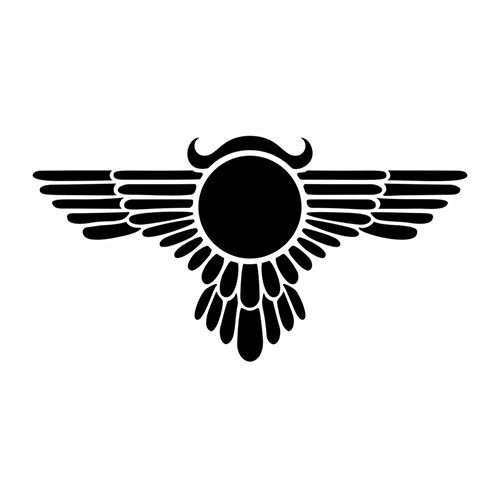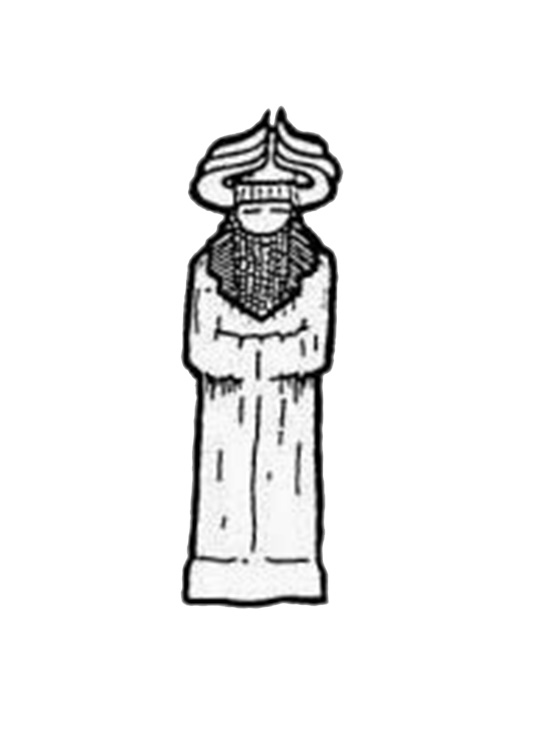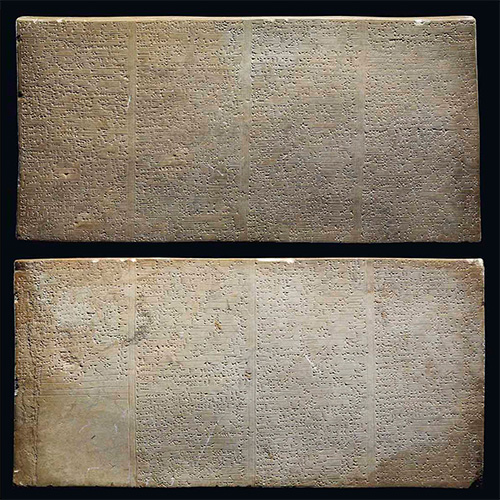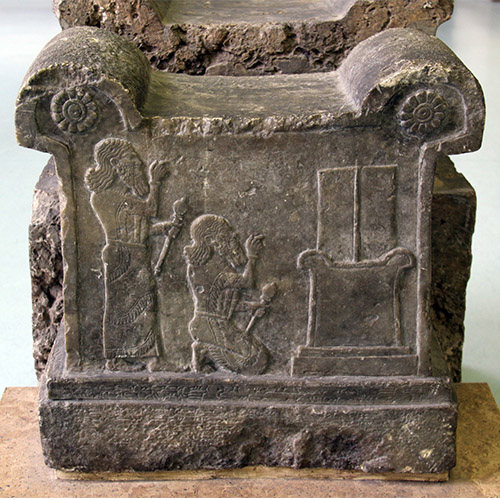About this myth
Epic of Tukulti-Ninurta I is a Prestige myth originating from the Assyrian belief system. The oldest attested artifact in our index that contains this myth was likely created around 1243 BCE. The main deity depicted in this myth is likely Aššur. Others include An, Enlil, Ištar, and Šamaš.
Source record No.Lot 145MediumWall panelMaterialAlabasterOrientationObverse and reverseImage date2014CreatorChristie's AntiquitiesSource notesGreat Inscription of Tukulti-Ninurta I. Sale 1561, Lot 145, Property of a Lady (private collection) AN ASSYRIAN GYPSUM CUNEIFORM DEDICATORY PANEL: REIGN OF TUKULTI-NINURTA I, CIRCA 1243-1207 B.C. © 2014 Christie's Antiquities (London)
Source record No.VA 08146MediumCultic altarMaterialAlabasterOrientationObverseImage date2018CreatorOlaf M. TeßmerSource notes© Foto: Vorderasiatisches Museum der Staatlichen Museen zu Berlin - Preußischer Kulturbesitz
In a nutshell
Myth summary
Tukulti-Ninurta I, the Assyrian leader, describes his military campaigns against the Babylonians. The poetic narrative embellishes the might and power of Tukulti-Ninurta I and his army, resulting in an Assyrian victory. A statue of the chief Babylonian deity, Marduk, was stolen and taken to the Assyrian capital.
Main deity: Aššur
Belief system: Assyrian
Origin: Asia › Middle East › Iraq
Belief system
Assyrian Religion
Polytheistic
Assyrian religion was adapted from Babylonian and Akkadian culture during the first two centuries BCE. The religion was practiced from roughly 2000-500 BCE in modern-day Iraq and its chief deity was Aššur.
arrow_forward More info Aššur
Main deity
Aššur (Sumerian: 𒀭𒊹) was the chief deity of Assyrian cultural traditions, wherein the capital was named after him. He is typically symbolized by a winged sun disc.
arrow_forward More info Artifact
Translation
"The Great Inscription of Tukulti-Ninurta I": English Translation by Yigal Bloch
Journal article · Yigal Bloch · 2017
Bloch's work provides both a transliteration and an English translation of Tukulti-Ninurta's inscription on pages 21-35. It is organized in seven columns and contains only a few missing lines. The whole work is a tribute to the cruel Assyrian conqueror's accomplishments and was written c. 1241–1206 BCE. (Note that the line numbers are not sequential.).
Included: Translation, Collation (full)
Language: Akkadian ⟶ English
Texts related to this myth
See full texts of this myth via related artifacts. Where available, a translation is included.
All texts
Full Translation, Collation (full)






















